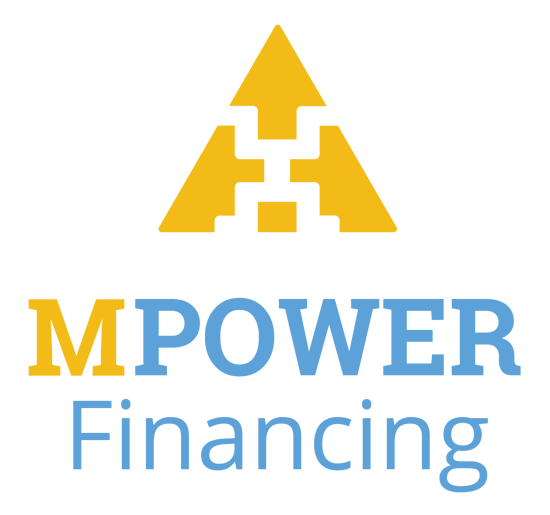What Is Work-Study?
Work-study is a federal student aid program for college students with financial need that helps them get part-time jobs.

Many, or all, of the products featured on this page are from our advertising partners who compensate us when you take certain actions on our website or click to take an action on their website. However, this does not influence our evaluations. Our opinions are our own. Here is a list of our partners and here's how we make money.
Work-study is a federally- and sometimes state-funded program that helps college students with financial need get part-time jobs.
It won’t cover all your college costs — you’ll need a combination of personal savings, scholarships, grants and student loans, too — but it’s beneficial for students who qualify.
» MORE: How to pay for college
How does the federal work-study program work?
The federal work-study program is considered need-based financial aid. To be eligible, you must fill out the Free Application for Federal Student Aid (FAFSA).
If your financial aid award says you qualify for work-study, then you're responsible for securing a work-study job.
Around 2,900 colleges and universities have a Federal Work-Study Program, according to the U.S. Department of Education, but not all schools do. Check with the financial aid offices at the schools you’re interested in to see if they offer work-study.
» MORE: Your guide to financial aid
Advertisement



Student loans from our partners

on College Ave website
College Ave 

Best for payment flexibility
Fixed APR
2.89-17.99%
Min. credit score
Mid-600s

on Sallie Mae website
Sallie Mae 

Fixed APR
2.89-17.49%
Min. credit score
Mid-600's

on SoFi® website
SoFi® 

Fixed APR
3.18-15.99%
Min. credit score
Mid-600s
How to apply for federal work-study
Use the following steps to apply for federal work-study.
- Complete the FAFSA. The only way to be considered for a work-study program is to complete the FAFSA. Fill out the FAFSA soon after the form opens each year because some aid is awarded on a first-come, first-served basis.
- Select work-study. When you fill out the FAFSA, select the box on the application that indicates you want to be considered for work-study. Selecting this option indicates your interest only; it doesn’t guarantee work-study will be included in your financial aid award, nor does it bind you to accepting work-study if it is offered.
- Review financial aid offers. After submitting the FAFSA, you’ll receive a financial aid award letter listing the loans, grants and work-study assistance you’re eligible for. Colleges award work-study based on availability of funds, student financial need and other financial aid a student is eligible for.
- Find a work-study job. Your financial aid award may list an amount allocated for work-study — say, $5,000 — but you don’t automatically get that money. You must find a work-study-eligible job, then work enough hours to earn that amount.
» MORE: How to get more financial aid
Do I have to accept work-study aid?
If work-study is on your financial aid award and you don’t intend to use it, you can decline the award. However, in most cases, getting a work-study job is a good idea, especially if it decreases your student loan borrowing and the amount of student debt you’ll face after graduation.
Where to find an eligible work-study job
After you’re offered a work-study opportunity, look for jobs that qualify for the program.
On campus work-study
Many work-study jobs are on-campus and can include research assistantships, administrative duties in a campus office or working in the library. The goal is to align your work-study job to your coursework.
Off-campus work-study
Other work-study jobs may be off-campus at nonprofit organizations or private companies. A portion of work-study positions are community-service jobs, including tutoring, child care and health care.
Online work-study
Many schools have online portals with work-study job listings, and students are encouraged to apply for jobs that are related to their field of study. Work-study jobs may offer flexible hours so you can more easily balance work and school.
Average work-study award
With a work-study job, you’re guaranteed to earn at least the federal minimum wage, $7.25 an hour. If the state minimum wage is higher, you’ll earn at least the state minimum wage.
The average work-study award for a student with an eligible job earned $1,615 in 2024, according to the annual Sallie Mae report “How America Pays for College.” Twenty-four percent of families used work-study as part of an overall strategy to pay for college, the report found.
How does work-study pay?
You can opt to get paid by check or direct deposit, or have the money credited to your school account to cover tuition, fees or room and board. There’s no requirement that you use the money for anything specific; some students use their work-study paychecks to cover day-to-day living costs.
Typically, you can only earn as much through work-study as the financial aid award stipulates, although some employers make exceptions.
For example, if your award allocated $5,000 for work-study, you could work as many hours as it takes to earn that amount. But say you reached that amount with two weeks left in the semester. Some employers may allow you to continue working for the remainder of the semester and exceed your allocated amount, but it depends on the employer.
The money you earn through work-study is taxable, and you should report it on your tax returns as well as the FAFSA the following year.
Next steps
Fill out the FAFSA. The application for the 2025-26 school year can be completed until June 30, 2026. If you’ve already been approved for the work-study program, check with your college for job listings.
Article sources
NerdWallet writers are subject matter authorities who use primary,
trustworthy sources to inform their work, including peer-reviewed
studies, government websites, academic research and interviews with
industry experts. All content is fact-checked for accuracy, timeliness
and relevance. You can learn more about NerdWallet's high
standards for journalism by reading our
editorial guidelines.
Related articles
AD
A Better Student Loan Experience. Cover 100% of School Costs — Rates From 2.89% APR.
Get my Rate
on College Ave's website

AD

A Better Student Loan Experience. Cover 100% of School Costs — Rates From 2.89% APR.
- Apply in less than 3 minutes;
- Rates starting at 2.89% APR;
- No application, origination, or prepayment fees;
- Flexible repayment options, including deferred or immediate.

Get my Rate
on College Ave's website









